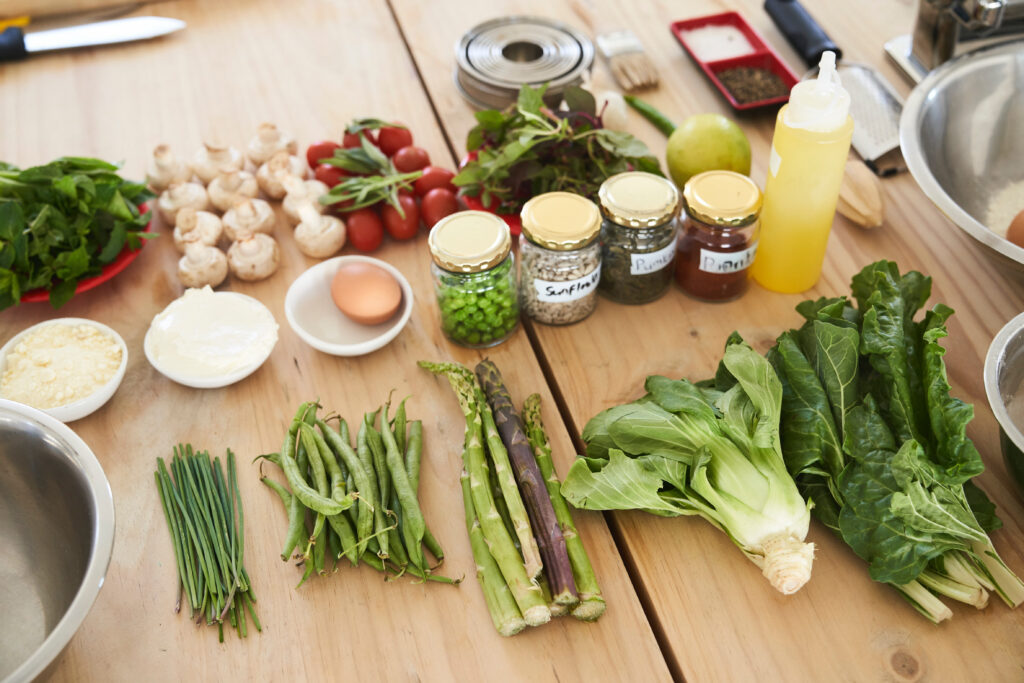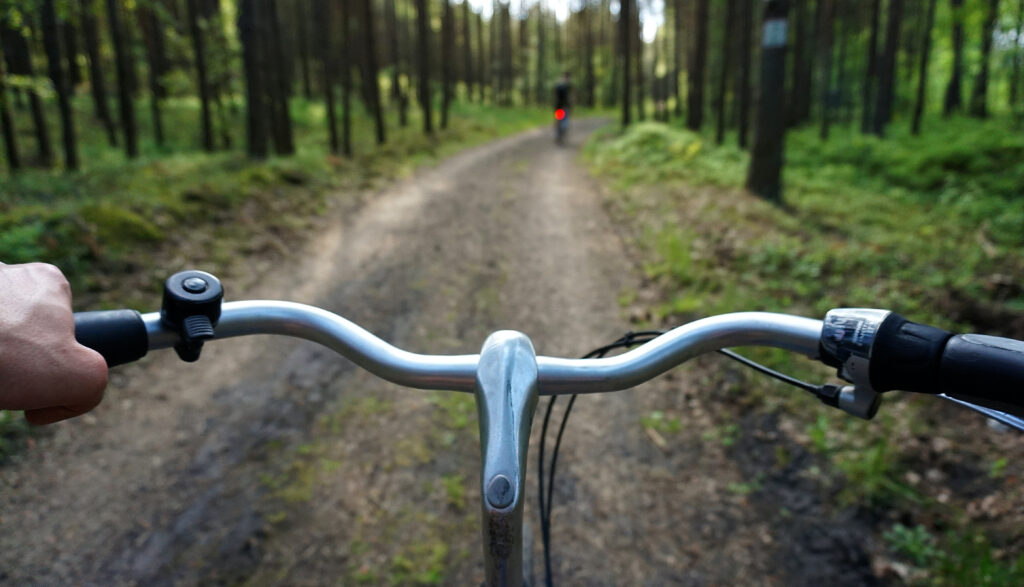A few weeks ago, I had coffee with friends and we talked about how to spend less money. Our conversation was wide ranging and interesting. I noticed that my friends want to spend less money for reasons like:
- inflationary pressures
- paying off debt
- over-consumption
- recently laid off
- retirement or travel plans
- grow their savings account
- and more
Can you relate to some of the points above? I certainly can! For example, before I simplified my life, I shopped for happiness, lived paycheck to paycheck, and had a mountain of student loan debt.
My husband and I changed our habits and paid off our debt. Over the years, we gave away our belongings, learned how to spend less money, and I wrote a book about our journey too!
How To Spend Less Money: 25 simple (and sometimes fun tips)
Below you’ll find 25 tips that are focused on spending less money. These tips are based on my life experiences, and resources that have inspired me. I’m not a licensed financial advisor, so keep that in mind as you read this article. I hope you’ll try a few of the tips below, and have fun with the process!
With that, let’s talk about ways to spend less money:
1.) Understand the why.
Journaling about why I wanted to save money helped change my habits. I wanted money to be a fun and interesting topic of conversation in my life, not a source of shame or guilt. Also, I wanted the freedom and flexibility to do work I loved. Getting clear on my goals helped me pay off debt, save money, and stay on track.
2.) Read YOUR MONEY OR YOUR LIFE.
Reading Your Money or Your Life by Vicki Robin and Joe Dominguez changed my life! I am a voracious reader, so I don’t say this lightly. The author’s 9-step plan enabled me to simplify my life and pay off my debt. Recently, I read the revised and updated edition, and I’m doing the program again! Read Your Money or Your Life and try the program.
3.) Track your spending and income.
My husband and I track our spending and income in a simple Excel spreadsheet. This practice helps us identify areas – like dining and transportation – where we can spend less and save more.
4.) Go car-free or car-lite.
If you can, consider going car-free or car-lite. For instance, we recently sold our car. We no longer had a car payment, but our car cost roughly $300 per month. Expenses like insurance, gas, depreciation, and parking fees add up fast.

5.) Start planning your meals.
I resisted meal planning for years. I wish that wasn’t true because meal-planning is fun. Plus, I’m saving money and time. For example, I’m not going to the grocery store three times a week and my fridge is stocked with ingredients for the recipes I have in mind for the week. I’m also less likely to order Chipotle when I have taco making supplies in my refrigerator. Use a shopping list to avoid impulse purchases.
6.) Buy in bulk.
Buying food in bulk reduced our weekly grocery bill. At the store, I put nuts, dried fruit, beans, flour, and other consumables into reusable bags. At home, we store our bulk goods in mason jars. It’s a great money saving system. And as a bonus, our pantry looks beautiful!
7.) Try a shopping ban.
If you want to try a shopping ban, listen to Courtney and Bailey on the Soul and Wit podcast. They share their “best tips on how to create your own shopping ban or spending freeze. You may decide to call off all non-essential purchases or focus on some of the places where you struggle with spending. For instance, try a month of no online shopping, or no Amazon shopping. These small changes will make a big difference. Plus, Courtney shares all the things she thought about purchasing during her No Buy July.”
8.) Join the library.
Before I joined the library, I spent roughly $150 on books each month. Joining the library has saved me a lot of money and has provided me with quality entertainment! I still buy books; just less often. Also, I like donating used books and money to my local library.
9.) Shop secondhand.
I enjoy shopping at thrift stores for household items. For example, baking cakes is one of my new hobbies. I was happy to find a new (to me) cake dome at Goodwill for $1.50! Purchasing stuff secondhand is one way to save money and support local businesses.
10.) Evaluate your housing costs.
Struggling to pay your rent or mortgage? Consider getting a roommate or downsizing into a smaller home. Think about the overall out of pocket costs in addition to your monthly payment. For homeowners, consider your interest rate, heating / air conditioning costs and repairs too.
11.) Cultivate friendships without spending money.
I loved Ellie Hughes’ recent article – How To Cultivate Friendships Without Spending Money To Go Out. Hughes wrote about free ways to gather with friends like, “Go grocery shopping for one or both of you, take your dog(s) to the dog park together, and ask them to join in your errands and chat as you head to the dry cleaner, bank,” and more.
12.) Cut needless subscriptions.
At the end of the month, I ask myself: Are you still using – and loving – your subscriptions? Asking myself this question, and having a list of my subscriptions in one place is helpful. Start with TV looking at your costs for cable, Netflix, Hulu, and other streaming services. Is there a low-cost option or way to consolidate?
13.) Curate your social media feeds.
If brands or influencers tempt you to spend money, unfollow them on social media. Instead, follow authors, brands, and influencers that support your money saving journey. Taking a break from social media is an option, too!
14.) Invest in your future.
Investments that bring me a thrill include saving for travel, my old age fund, and emergencies. Each savings bucket is an investment in my future self. Also, having saving accounts reduces my stress and brings me joy.
15.) Declutter, declutter, declutter.
Declutter your home, sell what you no longer need, and save the proceeds!
16.) Look for inspiring stories by fellow savers.
Consume books, podcasts, and articles about fellow savers. Stories are a great source of inspiration and motivation! Scroll to the bottom of this post for a list of helpful resources.
17.) Wait and see.
If you want to buy something, “wait and see.” As Courtney said, “That thing you want to buy now will very likely still be available next month. Wait 30 days for any purchase and see if it is still as necessary or appealing. Spoiler alert: it rarely is.”
18.) Establish new coping tools.
In my early twenties, I shopped for happiness to deal with stress. Since then, I’ve developed new coping tools. My coping tools, like bike rides with friends, cost little to no money. Plus, a bike ride is better for my mental health.

19.) Pause or cancel your gym membership.
Recently, I canceled my gym membership to save money. I also wanted to spend more time outside. Now, I’m making use of my community’s walking paths and bike lanes. When I want to lift weights, I use the small gym in my apartment complex. As a bonus, it’s been a great way to meet my neighbors!
20.) Evaluate your technology needs.
Sometimes I’m tempted to buy new gadgets like an iPhone, computer, or a camera. Before I buy new technology tools, I evaluate my needs. Also, I’m committed to buying technology secondhand because it’s less expensive. I enjoy using technology for creative projects, and it doesn’t have to cost a lot of money.
21.) Try Project 333.
I’m a fan of Courtney’s minimalist fashion challenge, Project 333. I’ve done the challenge a few times, and it’s been a blast! If you want to downsize your wardrobe, and save money, try this challenge.
22.) Quit drinking alcohol, or drink sparingly.
Over three years ago, I quit drinking alcohol. I love being sober because I’m happier and healthier. An unexpected benefit of not drinking: saving money. My monthly wine budget was costly! I diverted my “wine money” to a “travel adventure fund,” and that delights me.
23.) Look for discounts on insurance.
There are many types of insurance to purchase, like home, rental, health, and car insurance. Do some comparison shopping. If you find a better deal, change plans. I’ve done that in the past. I’ve also called my provider and asked about discounted offerings, too.
24.) Give differently.
Ask for purposeful gifts and give purposeful gifts. For example, instead of giving our younger family members traditional gifts on holidays, we donate money to their education fund.
25.) Find support.
Humans are social creatures, so cultivating and maintaining community is essential. Find ways to connect with like-minded people and talk about money goals. You could meet-up once a month or more often. When I talk about money with friends and family, I feel less alone.
Bonus Tip
If you are happy with your financial situation and aren’t worried about how to spend less money, consider donating to your favorite causes and organizations.
Change your spending habits with less guilt
In the list above, I mentioned one of my favorite books — Your Money or Your Life by Vicki Robin and Joe Dominguez. I’m mentioning the book again because it deeply impacted my life.
For example, I use Robin’s mantra — “No shame. No blame” — regularly. I love this sentiment because it’s helped me let go of judgment, stay on track, and practice gratitude. I’m grateful for the opportunity to keep simplifying my life and saving money.
How to Spend Less Money with a Simplicity Challenge
Simplifying my life gave me the time and space to assess my needs, wants, and my relationship with money. For me, untangling my relationship with money will be a lifelong process. I don’t think that’s a bad thing, though. I’ve learned to have fun with the process, and seek support from my community along the way.
If you’re still not sure where to start, that’s okay! Start small and try a “Decluttering Burst.” The number of things you can let go of in less than an hour will surprise you. Plus, you might be able to sell some of your stuff, too. Don’t forget to save the proceeds!
More Money Resources on How To Spend Less Money
Looking for more money resources? Here’s a list to aid your saving efforts:
- Read the updated edition of Your Money or Your Life by Vicki Robin and Joe Dominguez.
- More good reads include: Financial Feminist by Tori Dunlap, Secondhand: Travels in the New Global Garage Sale by Adam Minter, and You Can Buy Happiness (and it’s Cheap) by Tammy Strobel.
